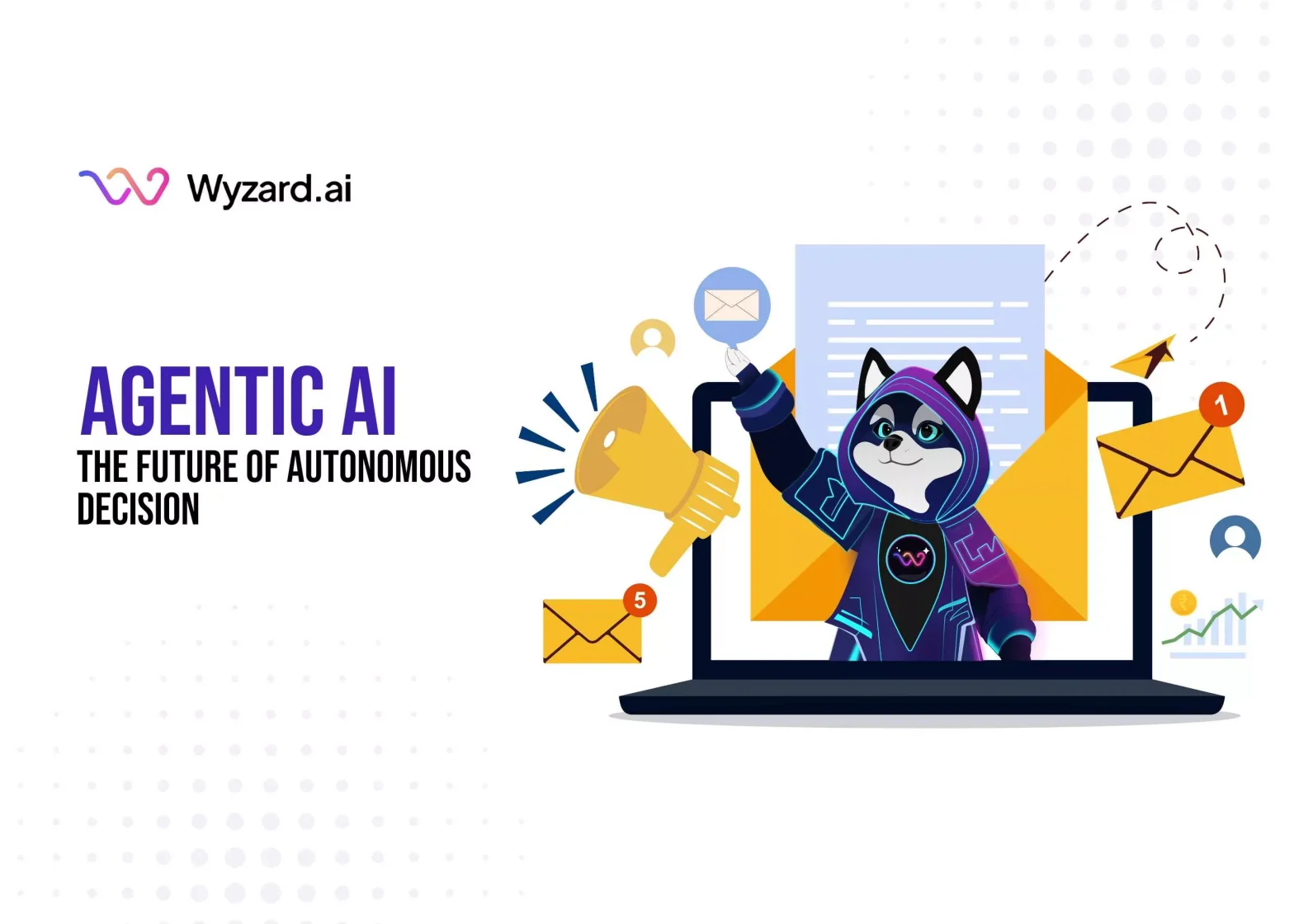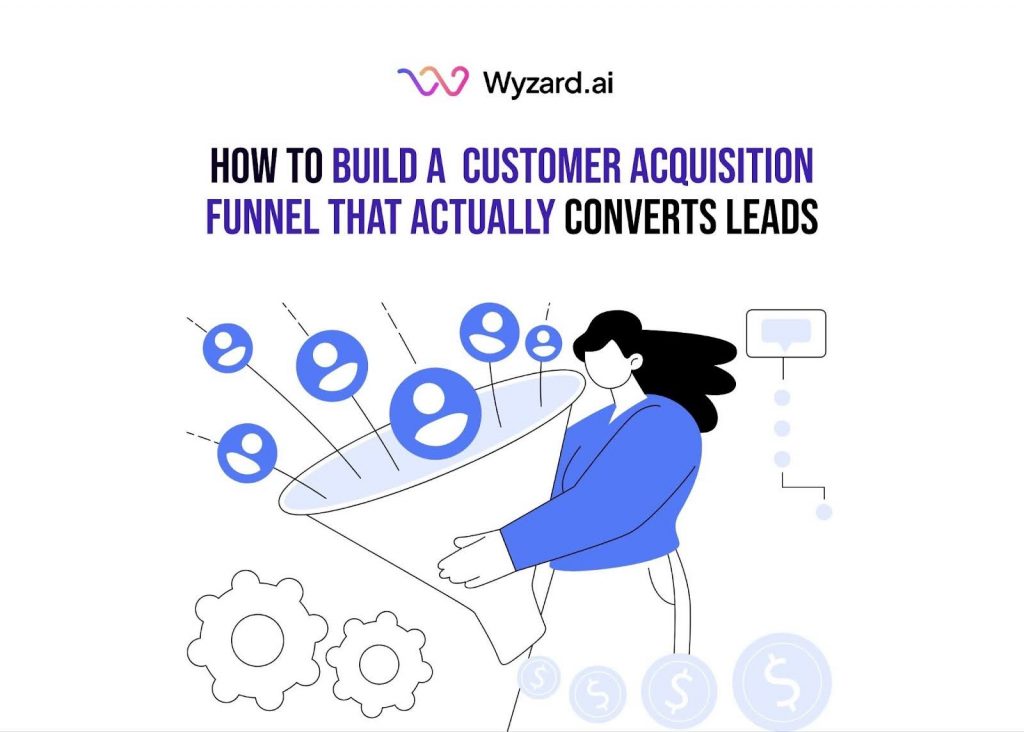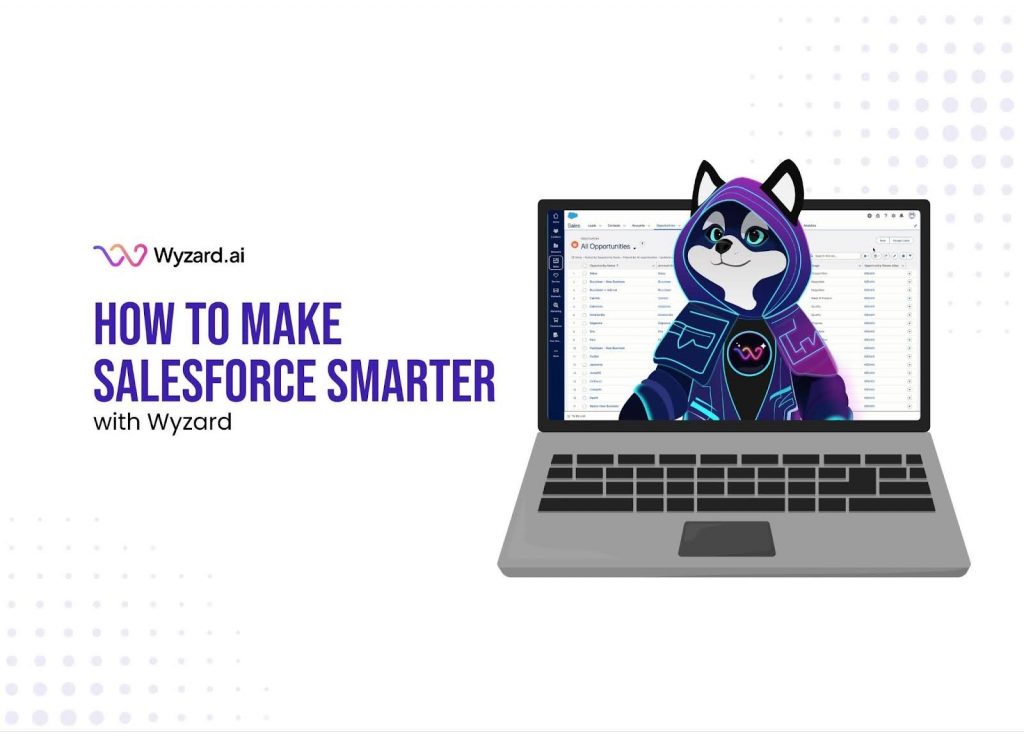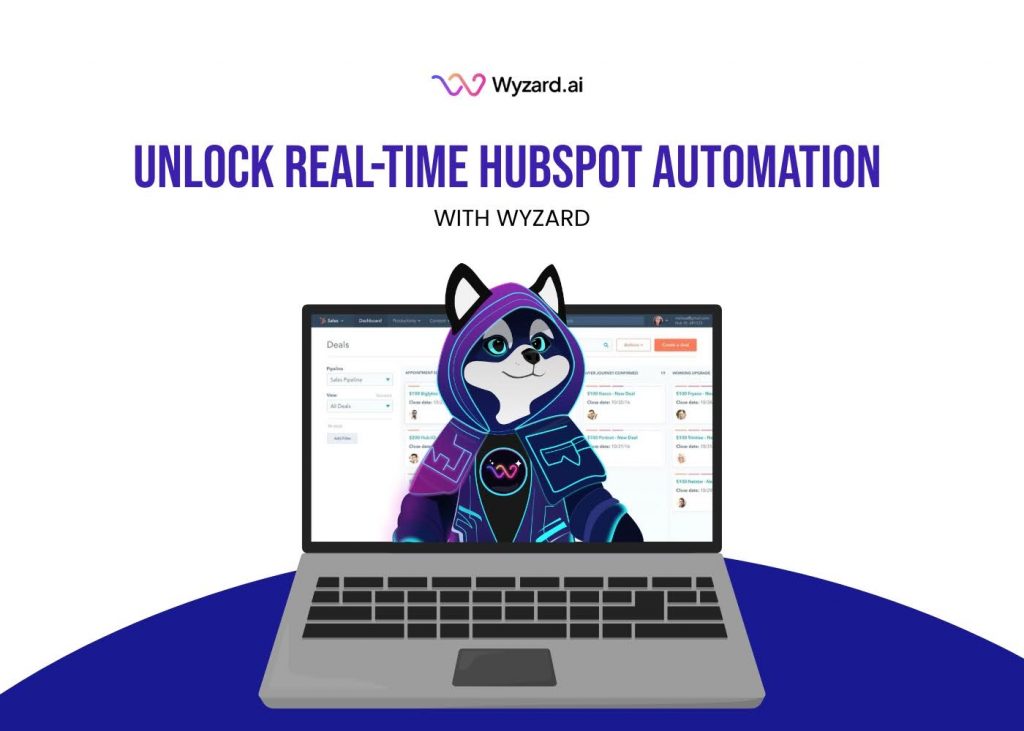You're generating traffic. Leads are visiting your website. But conversions? They're barely moving the needle. The problem isn't your ...

Subscribe Now
Every day, your team misses revenue opportunities because buyer signals get lost in disconnected tools. Someone downloads your whitepaper at 2 AM. Another prospect clicks three pricing pages but never converts. A lead opens your email, visits your site, then goes silent. By the time your sales team follows up, the moment has passed.
This isn’t a people problem, it’s a systems problem. Traditional workflows weren’t built for the speed modern buyers expect. That’s where agentic AI changes everything. Unlike basic automation that follows rigid scripts, agentic AI makes intelligent decisions in real time, connecting scattered buyer signals across your entire tech stack and triggering the right actions at exactly the right moment.
Why Traditional Lead Response Systems Fall Short
Most GTM teams rely on tools that work in isolation. Your marketing automation platform tracks email opens. Your CRM logs website visits. Your chat tool captures conversations. But these systems don’t talk to each other fast enough, and they certainly don’t make decisions on their own.
The result? High-intent prospects slip through cracks between tools. Your team spends hours manually qualifying leads, piecing together fragmented data, and trying to figure out who needs attention first. By the time someone gets back to a hot lead, that person has already moved on to a competitor who responded faster. The gap between AI-powered decision-making and human-only processes keeps widening, and buyers notice the difference in response time.
How AI Agents Make Decisions Without Human Intervention
Agentic AI doesn’t wait for instructions. It observes patterns, evaluates context, and takes action based on goals you set. Think of it as a skilled team member who works 24/7, never misses a signal, and gets smarter with every interaction.
Here’s what sets agentic AI decision-making apart: it processes data from multiple sources simultaneously, identifies which leads show genuine buying intent, and orchestrates responses across channels, all without requiring someone to click “approve” for every action.
For example, when a prospect visits your pricing page three times in one day, then opens your latest email, agentic AI recognizes this as a strong buying signal. Instead of adding the person to a generic nurture sequence, it can trigger a personalized message through the channel where that prospect is most active, whether that’s email, chat, or even LinkedIn.
The system doesn’t just react to individual actions. It understands context. Someone who downloaded an enterprise case study has different needs than someone who signed up for a free trial. Agentic AI data-driven decisions factor in all available information, firmographic data, behavioral signals, and past interactions to determine the best next step for each unique situation.
| Traditional Automation | Agentic AI Decision-Making |
| Follows fixed rules | Adapts to changing context |
| Requires manual setup for each scenario | Learns patterns and improves over time |
| Works within single tools | Orchestrates actions across platforms |
| Reacts to individual triggers | Evaluates multiple signals together |
| Needs human review for complex decisions | Makes autonomous decisions within guardrails |
Real-Time Signal Capture That Actually Converts
The difference between a closed deal and a lost opportunity often comes down to minutes, not days. Buyers research fast, compare options faster, and expect immediate responses. Agentic AI decision-making eliminates the lag between signal and action.
When someone shows intent, viewing your pricing, reading competitor comparison pages, attending a webinar- that information flows instantly into a unified system. The AI evaluates whether this person matches your ideal customer profile, where they are in their journey, and what action will move them forward. Then it executes.
This isn’t about replacing your sales team. It’s about ensuring they focus on high-value conversations instead of sorting through noise. The AI handles qualification, initial outreach, and nurturing until a lead reaches the point where human expertise matters most.
Wyzard.ai’s approach captures these signals the moment they happen and translates them into coordinated actions. If a prospect engages with your content across multiple channels, the system doesn’t treat each touchpoint as an isolated event; it connects the dots and responds accordingly.
Making Smarter Decisions With Connected Data
Scattered data makes smart decisions impossible. Most GTM teams work with information trapped in silos, marketing knows what content performed well, sales knows which objections come up most often, and customer success understands what makes people renew. But these insights rarely combine in real time to inform better decisions.
Agentic AI decisions based on connected data solve this problem. The system pulls information from every tool in your stack, your CRM, marketing automation platform, product analytics, and support tickets, and uses it to understand each prospect’s complete story.
When a lead takes action, the AI doesn’t just see “opened email.” It sees: opened email, visited pricing page twice, works at a company that matches your ICP, downloaded a case study last week, and engaged with a competitor comparison post on LinkedIn. Based on this complete picture, it makes an informed decision about the next best action.
Turning Every Buying Moment Into a Revenue Opportunity
Buyers don’t follow linear paths anymore. They jump between channels, research at odd hours, and expect personalized experiences at every turn. Traditional workflows weren’t designed for this reality.
Agentic AI adapts to how modern buyers actually behave. It doesn’t force prospects into rigid funnels. Instead, it meets them where they are and adjusts its approach based on their actions.
Someone who visits your site for the first time gets a different experience than a returning visitor who’s viewed five product pages. A prospect who downloaded an ROI calculator receives more relevant follow-up than someone who only read a blog post. The AI recognizes these nuances and tailors its response accordingly.
How AI agent decision-making creates better buyer experiences:
- Responds instantly when intent signals spike, not hours or days later
- Personalizes messaging based on actual behavior, not demographic guesses
- Coordinates outreach across channels so prospects don’t get duplicate messages
- Escalates high-value opportunities to sales at the optimal moment
- Continuously learns which actions drive conversion and refines its approach
This level of coordination isn’t possible with disconnected tools and manual processes. It requires a system that sees the full picture and makes decisions designed to move prospects toward revenue, not just through a process.
Key principles for responsible agentic AI implementation:
- Set clear guardrails around what actions the AI can take autonomously
- Build in escalation triggers for complex situations requiring human judgment
- Monitor performance regularly to ensure decisions align with your strategy
- Maintain transparency with prospects about how you use AI in engagement
- Use AI to enhance relationships, not replace the human element entirely
Wyzard.ai connects your existing tools and captures buying signals across channels, then orchestrates appropriate responses while keeping your team in the loop for high-stakes decisions. The system amplifies your team’s capabilities rather than replacing their expertise.
Measuring What Actually Matters
Traditional metrics—open rates, click rates, MQL counts, don’t tell you much about revenue impact. Agentic AI shifts focus to outcomes that actually matter: how many qualified conversations happened, how quickly prospects moved through the pipeline, how efficiently your team converted interest into revenue.
The system tracks which signals correlate with closed deals, which actions accelerate buying cycles, and which prospects are most likely to convert. Over time, it gets better at identifying patterns your team might miss and adjusting its approach based on what works.
Research from Markovate indicates that agentic AI systems process and analyze data up to 100 times faster than traditional approaches. This speed advantage translates directly into better decision quality; the AI spots opportunities and trends before they become obvious through manual analysis.
When you can see which combination of signals predicts purchase intent with high accuracy, you stop wasting resources on low-probability leads. Your team focuses attention where it has the highest chance of driving revenue, and the AI handles everything else.
Getting Started Without Overhauling Everything
Adopting agentic AI doesn’t require ripping out your entire tech stack. The most effective implementations work with your existing tools—CRM, marketing automation, chat platforms, analytics, and add an intelligent layer that connects everything.
Start by identifying where buying signals get lost today. Is it the gap between marketing engagement and sales follow-up? The delay in responding to high-intent actions? The difficulty is prioritizing which leads deserve immediate attention.
Once you know where the biggest gaps exist, you can deploy AI agent decision-making to bridge them. The system learns from your existing data, identifies patterns in how successful deals happen, and begins making recommendations. As you build confidence in its judgment, you expand the scope of decisions it makes autonomously.
The goal isn’t to automate everything; it’s to eliminate the friction that slows down your GTM motion. Let the AI handle repetitive decisions so your team can focus on strategic thinking, relationship building, and solving complex customer problems.
The Competitive Advantage of Faster, Smarter Decisions
Your competitors face the same challenge you do: too many signals, not enough time, and buyers who expect instant responses. The companies that figure out how to act on intent faster will win more deals.
Agentic AI gives you that speed advantage. While others manually sort through leads and try to coordinate across disconnected tools, your system identifies opportunities in real time and takes action immediately. By the time a competitor reaches out, you’ve already had three relevant touchpoints and moved the conversation forward.
This isn’t about replacing human judgment with robots. It’s about building a GTM engine that operates at the speed modern buyers expect, making thousands of small decisions correctly so your team can make the big ones that drive revenue.
FAQs
Marketing automation follows predetermined rules and requires manual configuration for each scenario. Agentic AI learns from data, adapts to changing patterns, and makes autonomous decisions based on context rather than fixed triggers. It connects insights across multiple tools and takes coordinated action without requiring someone to build every possible workflow in advance.
The system analyzes multiple factors simultaneously—behavioral signals, firmographic data, engagement patterns, and historical conversion data. It identifies which combination of signals correlates with successful outcomes and uses that understanding to score leads dynamically. Unlike static scoring models, it continuously refines its judgment based on new information about what actually drives revenue.
Yes. Effective agentic AI platforms integrate with your current CRM, marketing automation, analytics, and engagement tools rather than replacing them. The AI layer sits on top of your existing infrastructure, pulling data from multiple sources and orchestrating actions across platforms. This means you can adopt the technology without massive implementation projects or data migration headaches.
You define the boundaries within which the AI operates—what actions it can take autonomously, when it should escalate decisions to humans, and how to handle edge cases. For routine qualification and nurturing, the system works independently. For high-value opportunities or complex situations, it alerts your team to step in. The goal is to amplify human expertise, not eliminate it.
Most teams notice immediate improvements in response time and lead engagement. The system begins making decisions from day one based on your existing data. As it learns from ongoing interactions, its accuracy and effectiveness increase over time. Within weeks, you’ll typically see measurable improvements in qualification efficiency and pipeline velocity as the AI gets better at identifying high-intent prospects.
Other blogs
The latest industry news, interviews, technologies, and resources.
How to Make Salesforce Smarter with Wyzard.ai
Your CRM is packed with contacts, but how many buying signals are you missing right now? A prospect just ...

Unlock Real-Time HubSpot Automation with Wyzard.ai
Your HubSpot portal holds valuable data about every lead, deal, and customer interaction. But if you're waiting hours, or ...

 We’ve secured funding to power Signal-to-Revenue AI to GTM teams globally. →
We’ve secured funding to power Signal-to-Revenue AI to GTM teams globally. →


